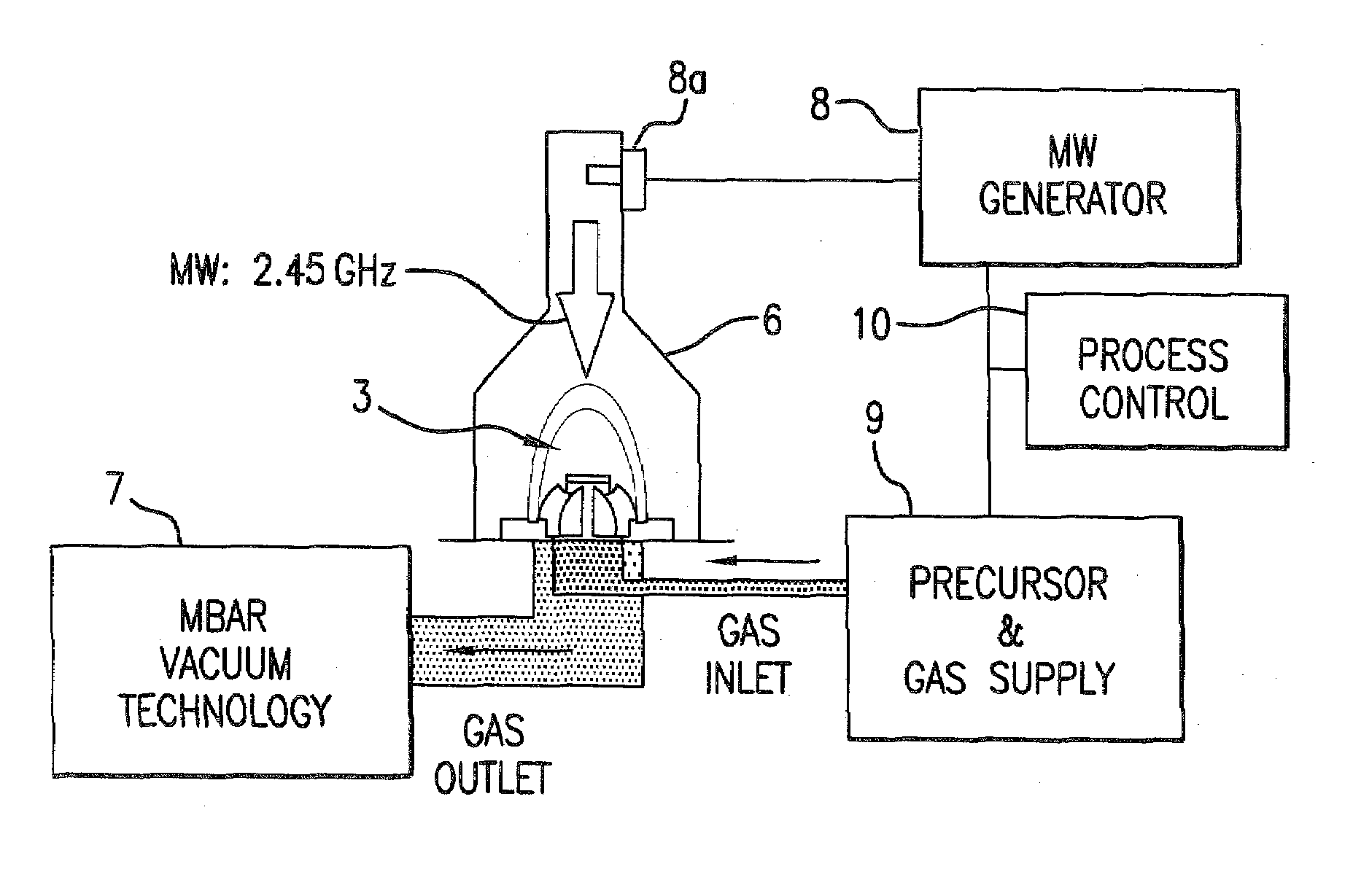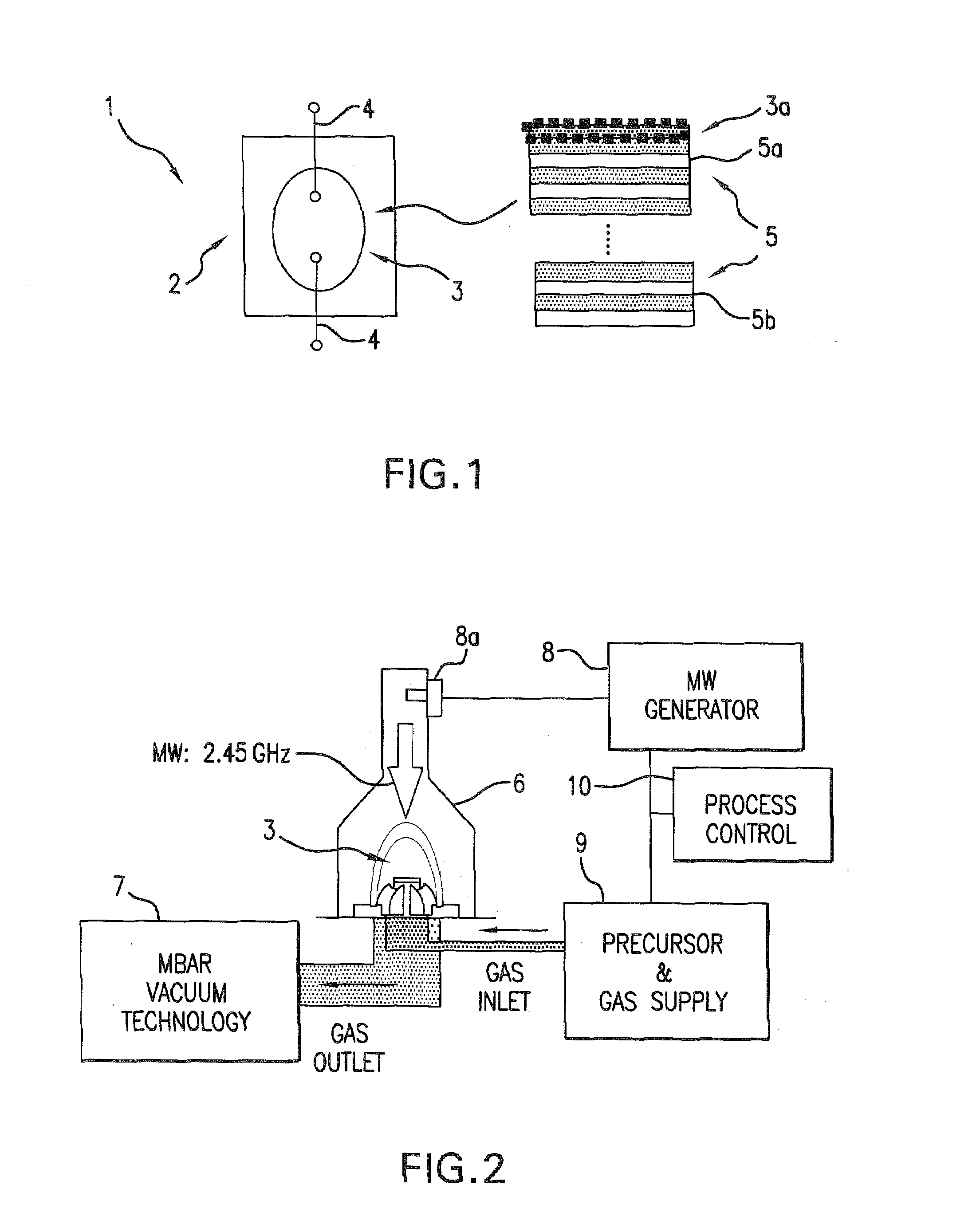Method for coating the quartz burner of an HID lamp
a technology of quartz burner and hid lamp, which is applied in the direction of coating, chemical vapor deposition coating, electric discharge lamp, etc., can solve the problems of large uv photon flux leaving the quartz burner unused, unable to achieve the desired effect, and inability to easily ensure the effect of success, etc., to achieve the effect of improving the energy balance, reducing the risk and ensuring the effect of uv photon flux
- Summary
- Abstract
- Description
- Claims
- Application Information
AI Technical Summary
Benefits of technology
Problems solved by technology
Method used
Image
Examples
Embodiment Construction
[0042]HID lamp 1 depicted in FIG. 1 is composed of a tubular jacket 2 and a quartz burner 3 with electrodes 4. “HID” is a technical term that stands for High Intensity Discharge.
[0043]The specific design and function of an HID lamp 1 of this type is known and therefore need not be explained further. As shown in the associated enlargement of a section, a UV-reflecting layer packet 5 is applied to the inner surface of burner wall 3a, the layer packet being composed of a large number, e.g., 50, of individual alternating layers made of Ti / Si oxide. Unshaded layers 5a represent Ti oxide layers, and shaded areas 5b represent Si oxide layers. The thickness of the individual layers typically ranges between 5 nm and 100 nm, whereby the thicknesses need not necessarily be distributed strictly equally; instead, accumulations of small layer thicknesses can also occur. This depends on the design. The layer thickness is preferably <1200 nm, however, because the layer then has high flexibility, an...
PUM
| Property | Measurement | Unit |
|---|---|---|
| thickness | aaaaa | aaaaa |
| temperatures | aaaaa | aaaaa |
| thickness | aaaaa | aaaaa |
Abstract
Description
Claims
Application Information
 Login to View More
Login to View More - R&D
- Intellectual Property
- Life Sciences
- Materials
- Tech Scout
- Unparalleled Data Quality
- Higher Quality Content
- 60% Fewer Hallucinations
Browse by: Latest US Patents, China's latest patents, Technical Efficacy Thesaurus, Application Domain, Technology Topic, Popular Technical Reports.
© 2025 PatSnap. All rights reserved.Legal|Privacy policy|Modern Slavery Act Transparency Statement|Sitemap|About US| Contact US: help@patsnap.com


